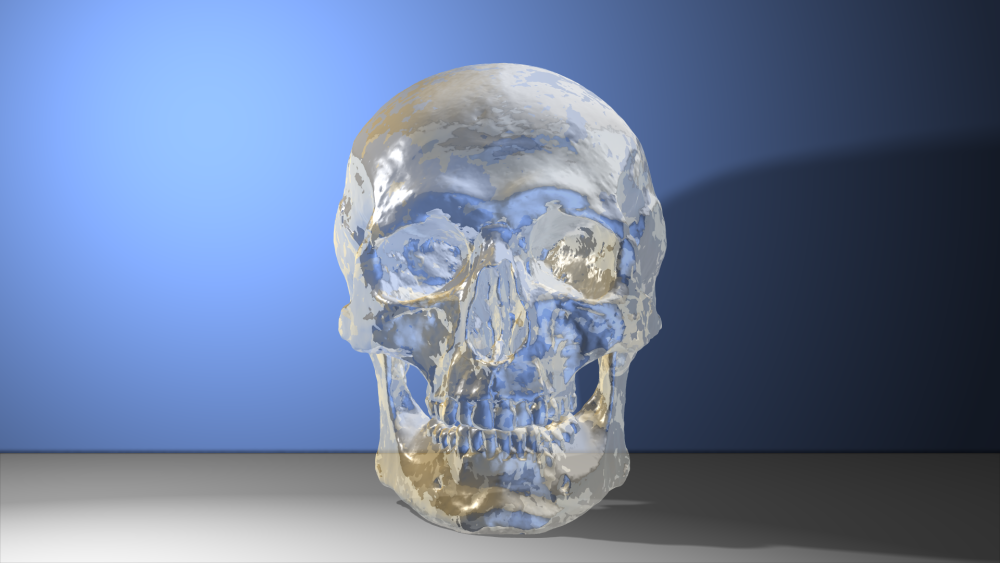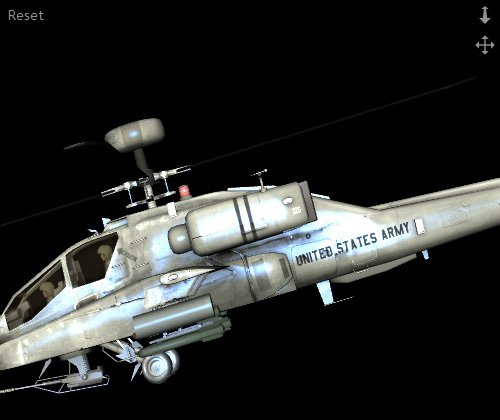A 3D model’s textures are listed in the Materials panel. This is displayed during import and can be accessed again at any time after import by clicking the cog icon next to the 3D model in the Media panel, or right-clicking the model and choosing Properties from its menu.
The appearance of a 3D model in your scene can be drastically altered using the materials options. Models will often have multiple materials, representing different parts of the model. The glass in a car’s windows will be a separate material to the metal on the doors, for example. For realistic results we recommend setting up each material.
Selecting a material in the list will highlight it with a red mesh in the preview, so that you can see precisely which part of the model you are adjusting. There are four different Illumination Models which can be used to configure your materials, each of which will display slightly different controls:
- Phong: Phong shading is a simple illumination model which works well for plastic surfaces.
- Cook-Torrance: Cook-Torrance is a physically-based rendering technique which defines a surface using Roughness and Fresnel values.
- Metallic-Roughness: The Metallic-Roughness workflow is a system of physically-based rendering which defines materials using a base color and reflective characteristics, which are defined as metallic or dielectric. The diffuse map defines the color and reflectivity data, and the metallic map defines whether the material is metallic or dialectric. Metallics include all electrically conductive materials, while dialectrics include all non-conductive materials (plastics, leather, wood, glass, paint, etc.) Metallic-roughness uses a fixed, hard-coded reflectance value of 4% for all dialectrics.
- Specular-Glossiness: The Specular-Glossiness workflow is another system of physically-based rendering which defines materials using a base color and reflective characteristics. In this case the diffuse map holds the color data, and the reflectivity is defined using separate specular and glossiness maps. Metallics include all electrically conductive materials, while dialectrics include all non-conductive materials (leather, wood, glass, paint, etc.) Specular-glossiness provides full control over dialectric reflectiveness, with a range from 2% to 5%.
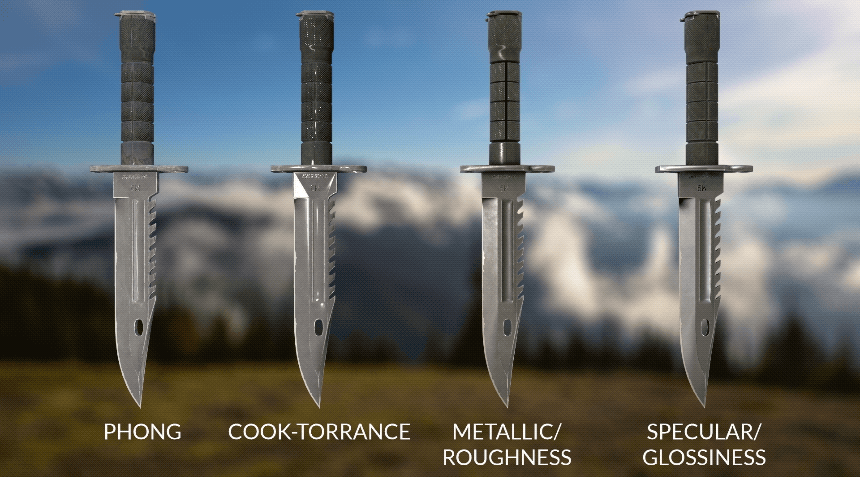
Image Maps
Each illumination model uses various image maps to apply color, texture, and detail to your model. The different categories of controls are covered categorically on this page. For a look at all the controls available for each illumination model, see the page pertaining to the specific illumination model you want.
- Diffuse Map: The diffuse map is used to hold the basic color data for the surface of the model.
- Specular Map: A specular map defines where on the model’s surface specular highlights will be created when illuminated.
- Normal Map: Normal maps are used to increase visual detail of a model without increasing the number of faces or polygons. This allows for greater apparent detail without negatively impacting performance.
- Bump Map: Bump maps add detail without adding geometry, in a similar way to normal maps, but in a simplified way, using greyscale to indicate bump height.
- Emissive Map: Emissive maps are used to define areas of the model which will emit their own light.
- Occlusion Map: An occlusion map is a greyscale image, with white indicating areas that should receive full indirect lighting, and black indicating no indirect lighting. They replicate the shadows created in crevices and caverns in an object’s surface.
- NOTE that ambient occlusion can be calculated without an occlusion map, using the ambient occlusion settings in the layer materials.
- Metallic Map: The metallic map is used by the Metallic-Roughness material to determine how reflective the surface of your model is. White represents metal, and black represents non-metal. The .gltf format reads metallic values from the blue channel of the selected image, and uses the green channel of the same image to store roughness values.
- Roughness Map: The roughness map is used by the Metallic-Roughness material to define surface irregularities which cause light diffusion. The gltf format reads roughness values from the green channel of the selected image, and uses the blue channel of the same image to store metallic values.
- SG Specular Map: The SG specular map is used by the Specular-Glossiness material to define the reflectance values for metal areas of the model.
- SG Glossiness Map: SG glossiness determines the surface irregularities which will cause light diffusion. Black indicates a rough surface, and white indicates a smooth surface.
- Clear Coat Intensity Map: The metallic-roughness material includes the option of applying a clear coat over the primary material, using separate texture maps. This map defines the thickness of the clear coat texture.
- Clear Coat Roughness Map: The metallic-roughness material includes the option of applying a clear coat over the primary material, using separate texture maps. The roughness map defines the surface irregularities in the clear coat which cause light diffusion.
- Clear Coat Normal Map: The metallic-roughness material includes the option of applying a clear coat over the primary material, using separate texture maps. Normal maps are used to increase visual detail of a model without negatively impacting performance.
Compare the difference between an untextured model in the first image, and the same model with textures and materials set up, in the second image:
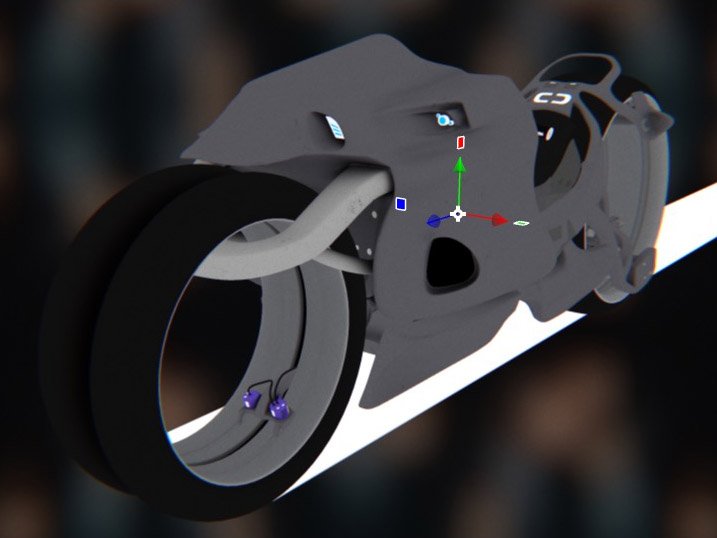
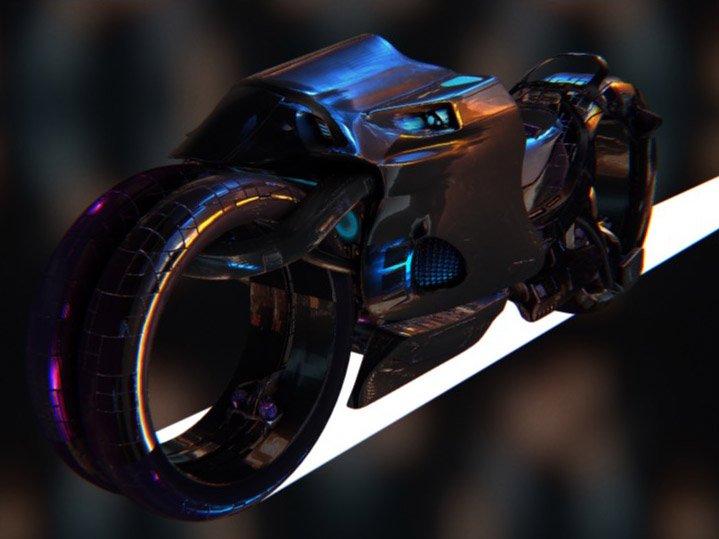
Most 3D models have been designed with textures. HitFilm will attempt to import textures automatically during import, if they are located in the same folder as the 3D file. If textures are not found automatically or if you want to change a texture, you can locate a new one using the folder icon. You can remove a texture from a slot using the X button next to the texture filepath.
Diffuse Map
The diffuse map is used to add surface detail and color to the model. Here is an example of a helicopter, with the diffuse map providing dirt detail on the hull as well as lettering:
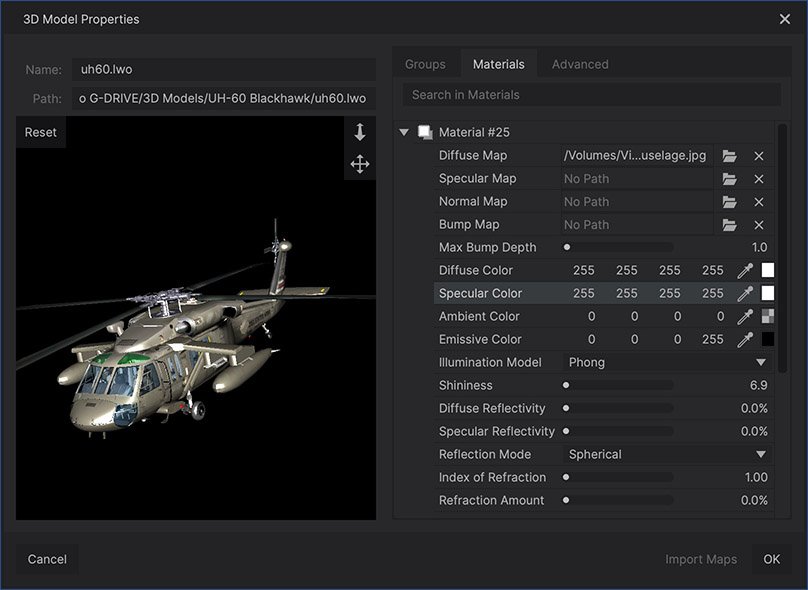
The image file for the diffuse map looks like this:
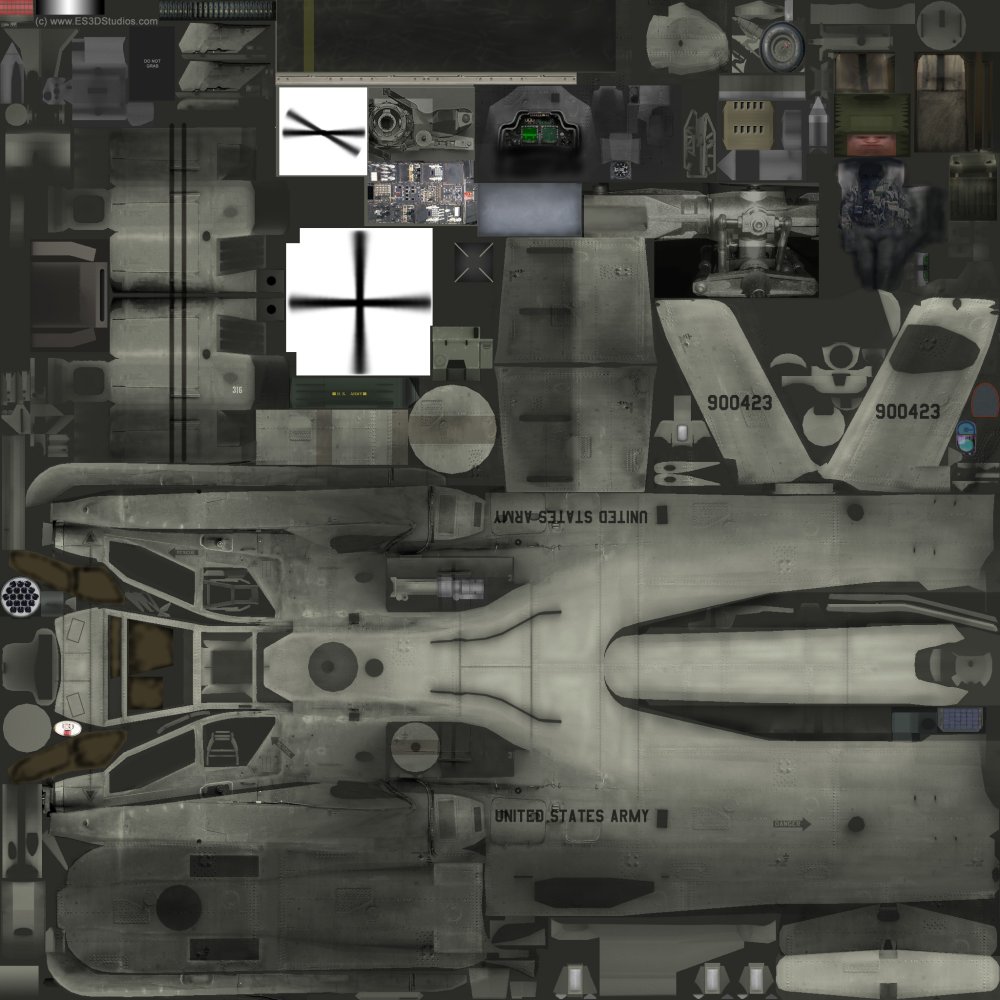
Textures are not made inside HitFilm. Instead, they are produced when the 3D model is designed and created. However, you can customize textures using any normal image editor, and changes made can be then re-applied in HitFilm.
Specular Map
Specular highlights are created by your lighting setup. By default all surfaces on the model are equally likely to receive specular highlights. Sometimes, however, you may want to restrict specularity based on the material – for example, if you have a normally shiny surface (such as polished metal) covered in dirt and scratches, you will want to restrict the specularity only to the clean areas. This can be achieved using a specular map.
Observe the helicopter in the first image, without a specular map, and compare it to the second image, with a specular map applied:
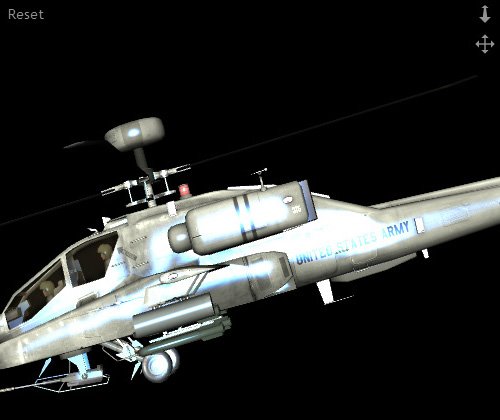
In the above example the specular highlight has been made blue and more extreme, so as to illustrate the point. Ordinarily you would opt for a subtler appearance. In the first image, where no specular map is used, note how the specular highlight is bright along the entire length of the helicopter, including over the UNITED STATES ARMY text. In the second image, note how the specularity has been restricted. Dirtier areas of the helicopter are less reflective. The UNITED STATES ARMY text is now visible and is not creating highlights – as if the black paint of the text is preventing it. Using a specular map can drastically improve the realism of your 3D models.
3D models are usually provided with a specular map, but they can also be created by hand. They are greyscale images, with black areas representing non-specular areas and white areas representing high specularity. The specular map for this helicopter is very simple:
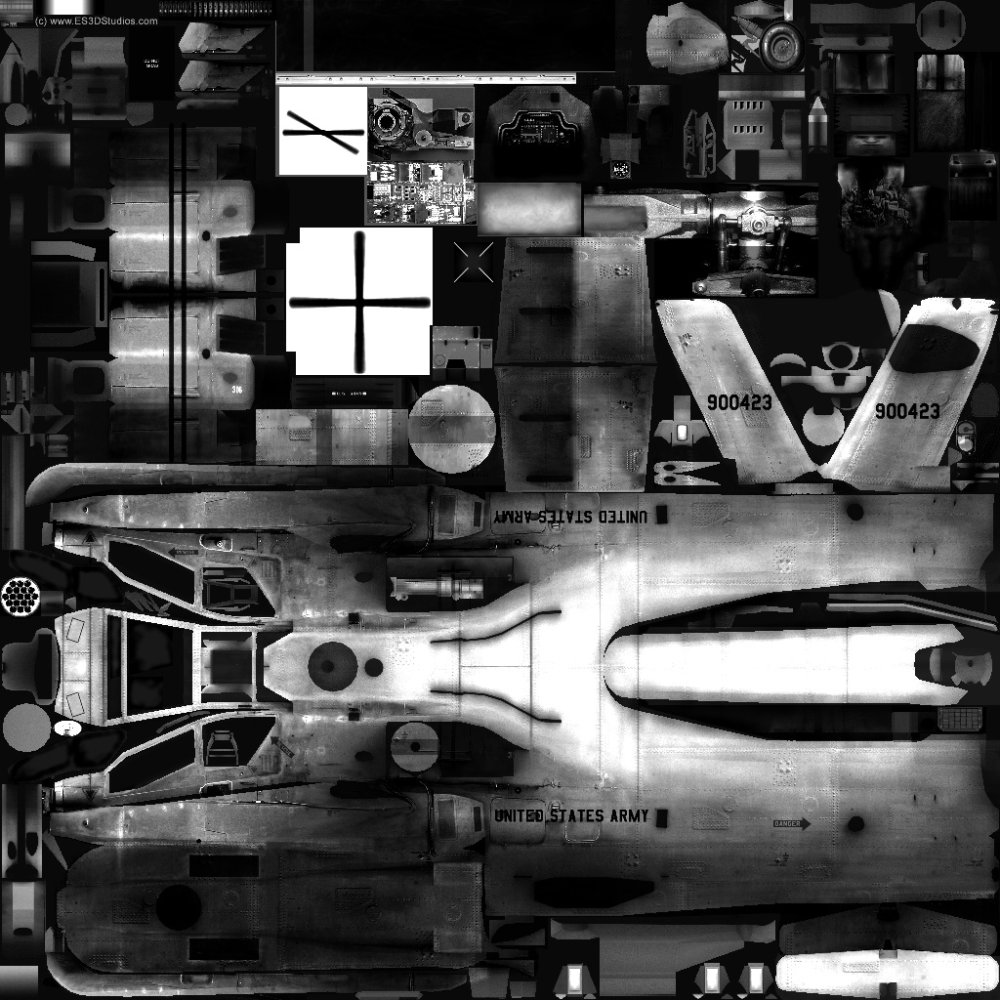
The specular map slot also restricts the behavior of the reflectivity options, detailed below.
Normal Maps & Bump Maps
Normal Maps are hugely powerful textures which can be used to add the appearance of additional 3D detail to a model, without actually increasing its polycount. Normal maps are used to create detailed models without negatively impacting performance.
The smooth 3D sphere in the first image has no surface detail at all. By applying a normal map, we get the second image:
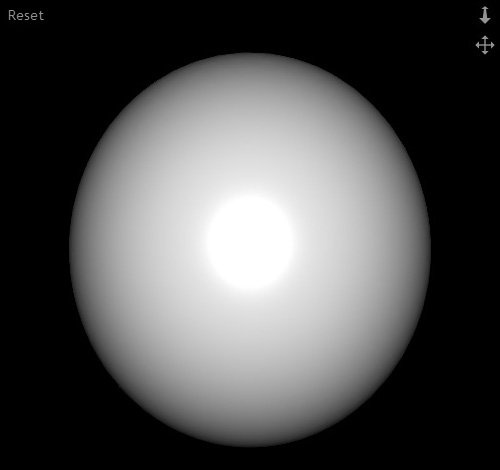
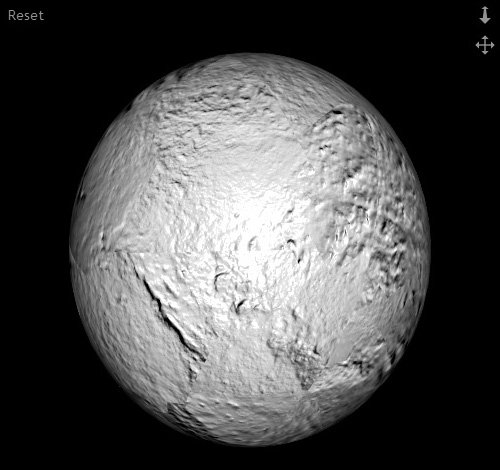
The sphere model now appears to have substantial surface detail. However, it is still the same smooth sphere. The illusion of surface detail is being created entirely by the normal map. The huge benefit is that the model is still very simple, which keeps rendering times low.
There are restrictions to how normal maps function. If you move your camera very close it will become apparent that the detail is texture-based. Similarly, viewing the model from an oblique angle can reveal that the surface detail is only an illusion. And while the normal mapped surface reacts to the position of 3D lights for illumination and shading, normal maps won’t cast actual 3D shadows. Normal maps are therefore best used for subtle, fine surface detail, while major features are represented by actual geometry.
Bump Maps perform a similar task to normal maps but using a different, less sophisticated technique. Bump maps can be created by hand much like a specular map, as they are greyscale images with white representing maximum height and black representing minimum height. Normal maps have to be generated from by 3D modeling software and the textures include information for X, Y and Z vectors.
A common workflow would be to produce a high poly model first, then generate a normal map which can be applied to a low poly version. This retains the illusion of fine detail while keeping fast performance.
Because bump maps are inherently relative, with no actual defined height, you can adjust the scale of bump mapping using the Max Bump Depth property. This does not affect normal maps.
Lighting Colors
The various color properties are used to set up the default colors for the material. These combine with the texture maps and your lighting setup.
- Diffuse Color: Alters the base color of the material under a point, spot or direction light. The luminance of this color determines the brightness of the diffuse texture map.
- Specular Color: Determines the color used for the material’s specular highlights. Specular highlights are only visible if there is a 3D light source in the scene.
- Ambient Color: Defines the color of the material under an ambient light source.
- Emissive Color: The color of the material regardless of the lighting setup. Even when the model is unlit or shadowed, it will still emit this color. This is useful for simulating light sources, such as neon objects or lights on a vehicle.
Reflectivity
There are two types of reflectivity. Specular reflectivity is what we normally think of when we talk about reflections – seeing a visible reflection of an object in the surface of another. Diffuse reflectivity doesn’t produce a direct reflection but causes the object to be illuminated by surrounding objects.
Here is an example image with a single light source and no reflectivity:
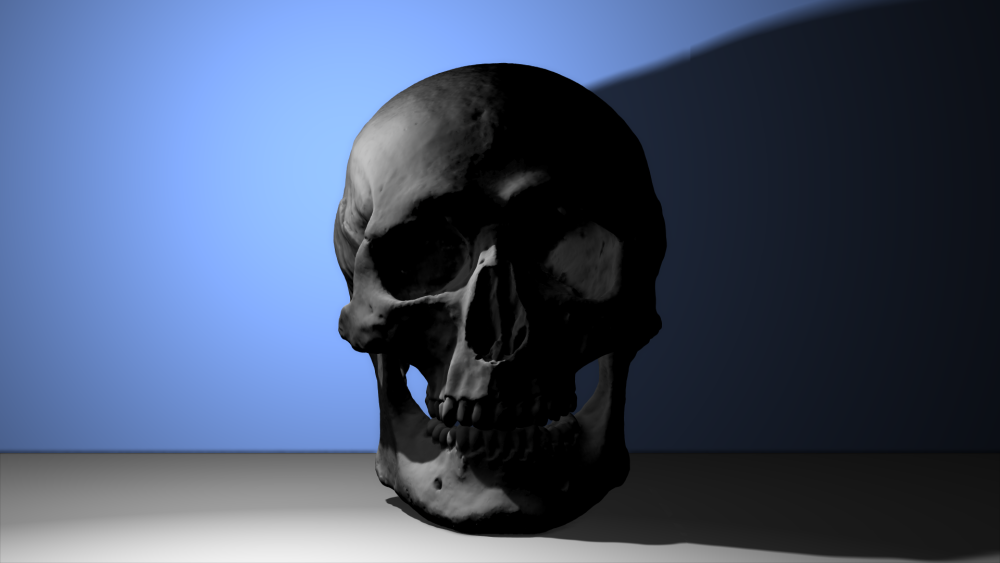
The overall lighting in the above image is unconvincing, because the skull is not being illuminated by its surroundings. While the blue wall and grey floor are not directly emitting light, they should nevertheless be bouncing light.
Here is the same shot with diffuse reflectivity turned on, and no other changes:
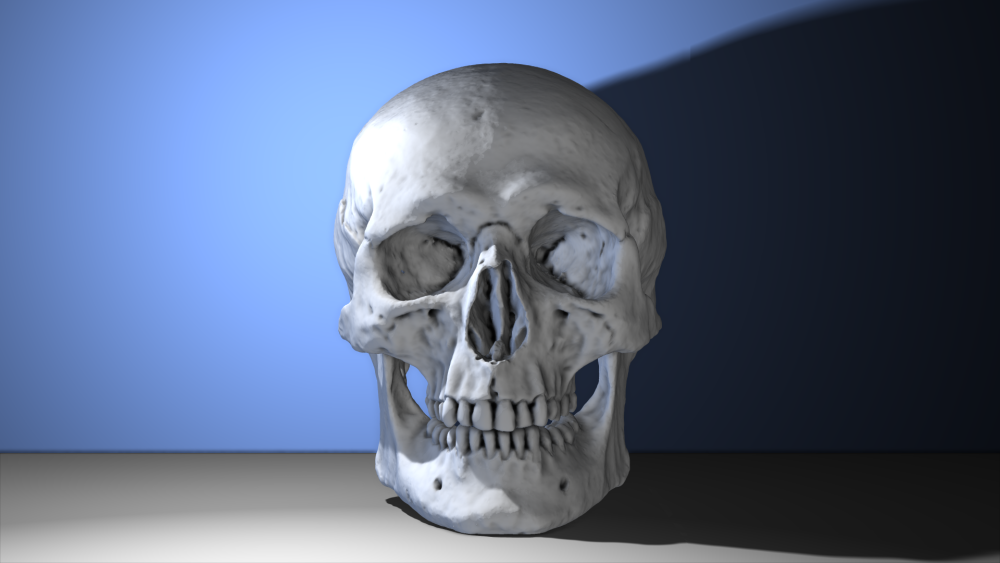
This time the skull sits far more naturally in the scene. It is brighter and is receiving diffuse blue light from the back wall. This still only uses a single light source, but the overall lighting impression is far more realistic. The diffuse reflectivity technique is subtle and hugely powerful – for very little effort you can achieve much more convincing lighting.
Here is the same scene using specular reflectivity instead of diffuse:
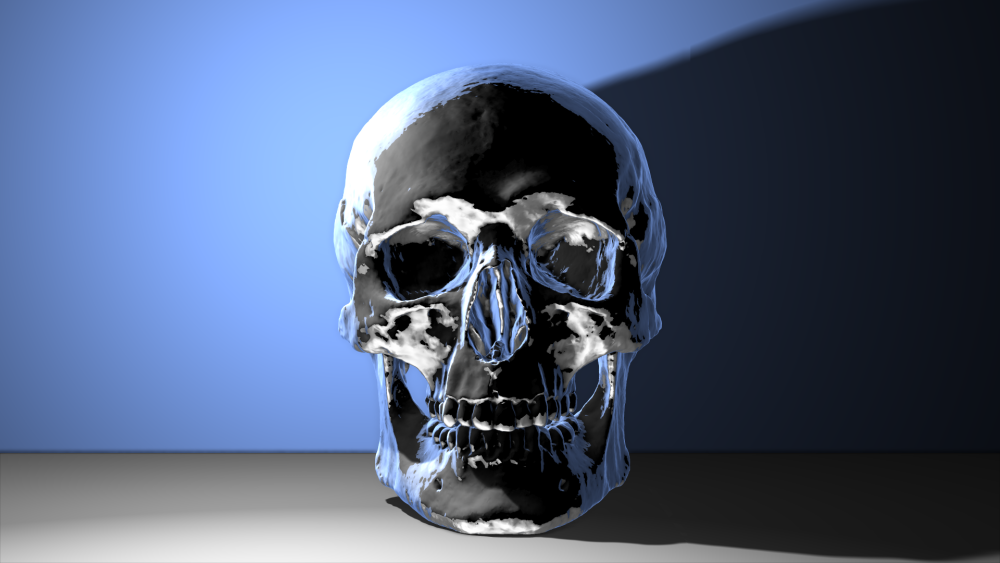
The result is very different. The reflections are very sharp and defined, as if the skull were a shiny chrome material.
Here is a more extreme example, using the same settings but a different background wall:
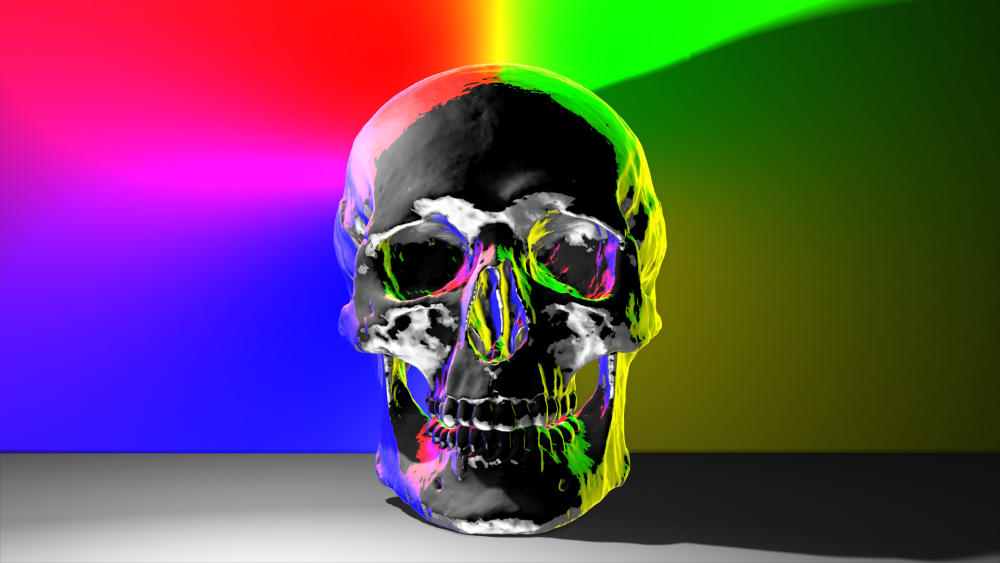
And the same background again, but with a diffuse reflectivity setup:
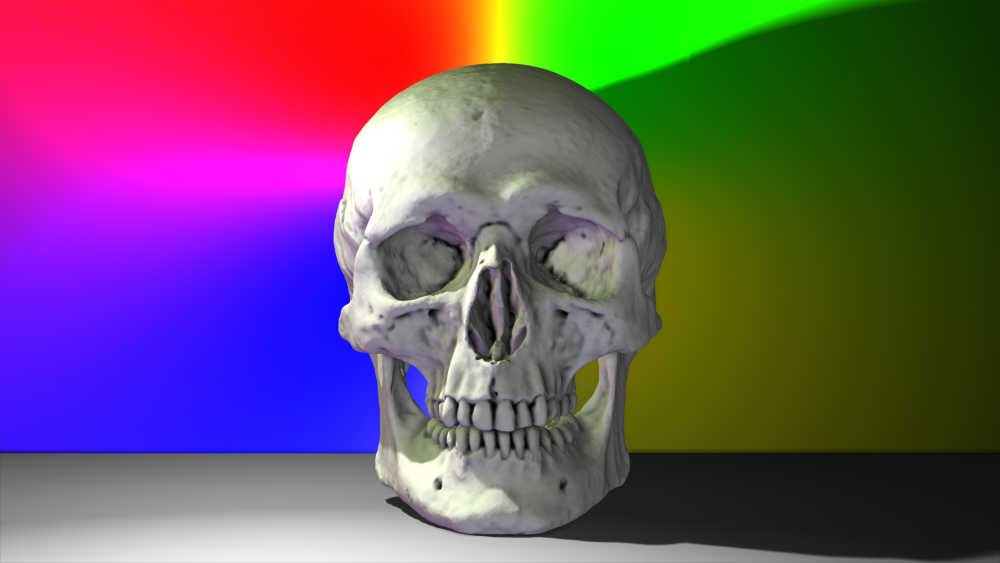
You can, of course, combine the two, which is what you will normally want. That’s how the copper skull was created, using a mixture of diffuse and specular reflectivity:
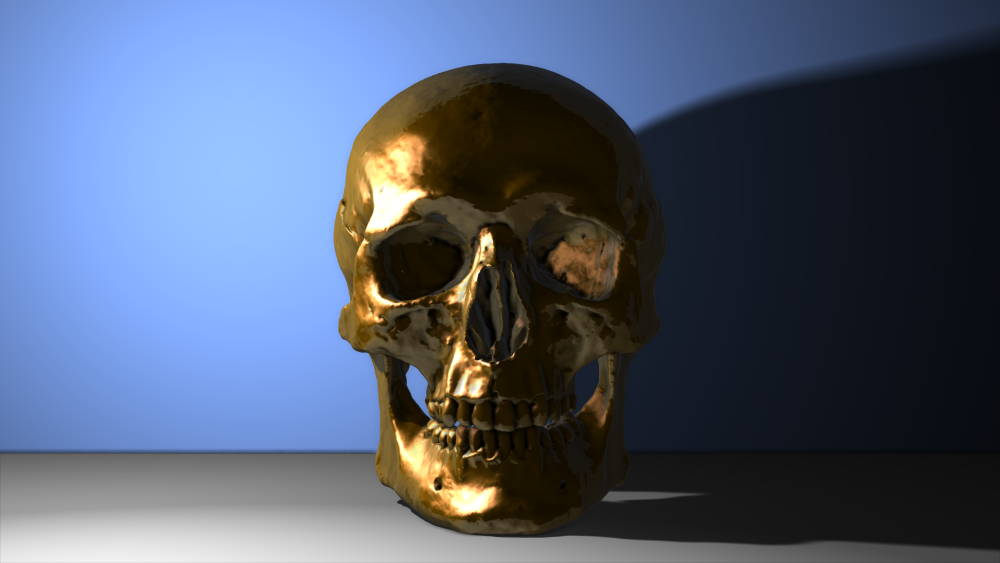
The amount of diffuse and specular reflectivity can be adjusted per material.
You can also use an environment map image for reflectivity, in addition to the actual 3D scene. An environment map is usually a panoramic, wrap-around image representing a particular location. While this is not as accurate as reflecting the actual 3D scene, it is often more convenient. For example, if you are compositing an object into a live action plate, you are more likely to have a panoramic image of the location than a full 3D recreation.
A 3D layer can be assigned a single environment map. This is set in the material properties of the layer on the timeline. See 3D Objects on the Timeline for more information.
Refraction
Refraction occurs when light is deflected while passing through a semi-transprent object. In HitFilm refraction causes a vertically inverted version of the scene to be visible on the surface of the material.
As with reflectivity, refraction can also use the 3D model layer’s environment map. See 3D Objects on the Timeline for more information.
The Index of Refraction sets the amount of refraction, which differs depending on the density of the material the light is passing through. Water has a refraction index of 1.7 while glass typically starts about 1.55, for example.
The Refraction Amount determines the visibility of the refraction.
Here is an example of the skull object set up to look more like crystal:
